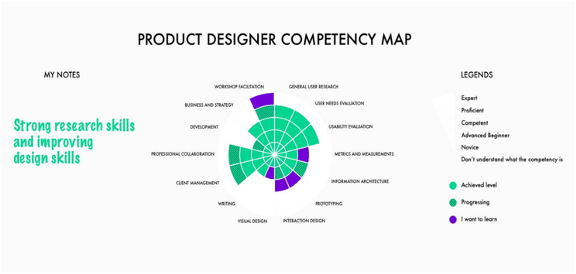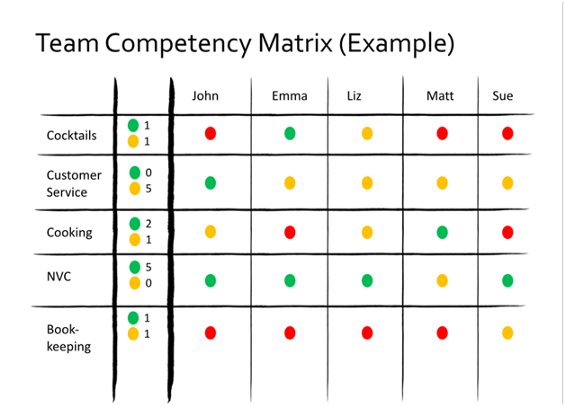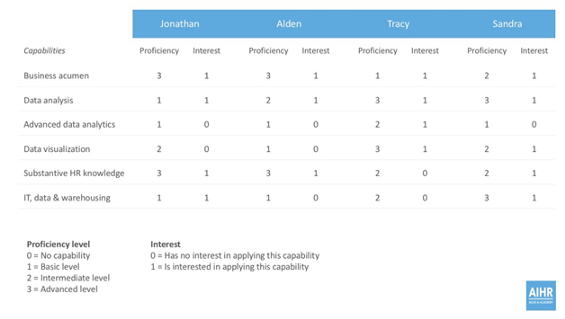Skills mapping is a modern approach to a team’s skill management. Companies of all sizes can use it to outline the required and available skills on a team or project.
Maps have been critical to man’s survival since ancient times. They can be traced back to more than 5000 years. A map is crucial for a person who is traveling to an unfamiliar place. It can help that person know where they are going and plan out alternate routes to get to that destination.
Well, sometimes data-driven HR professionals do something similar. They often help companies maximize the skills of their people and perform work that aligns with their aspirations. It’s their job to steer employees on the right path and reach their professional destination. They do this with the help of skills mapping.
What do you mean by competency mapping?
If recruiters know one thing, it’s the fact that every person has their strong sides and weaknesses. They might possess exceptional technical skills but lack communication abilities. Competency mapping is the process of identifying those strong sides and weaknesses in an employee. It aims to help a company or HR professionals better understand the skills available in a team, and if career development efforts need to be directed.
Additional Reading: The Devastating State of Maternity Leave in the U.S.


What is a skill matrix?
A skills matrix is a tool that lets you assess your team’s ability to perform its tasks. Also called a competency matrix, it helps recruiters map required and desired skills for a team. As a matter of fact, a matrix is a valuable tool for any data-driven professional.
In a nutshell, it’s a grid that visualizes:
- what skills the company requires
- the skills that are available
- the skills that are missing
There are two steps HR professionals need to take to implement a skills matrix successfully. First, they need to create an overview of all the skills that are required to complete a job in an effective way. By doing so, they can define the critical activities of the team and outline the essential skills needed to complete these activities.
The second step is to define what skills are available within a team.
For example, if a particular business project requires data analytics skills, HR professionals need to find a person within the company who possesses this skill.
If the company doesn’t employ a person who has this type of skill, the HR team can proceed with hiring an employee with the relevant abilities. A great source of skilled talent is recruitment agencies that can help you hire a candidate as fast as possible.
Additional Reading: Why and How to Develop Collaborative Hiring Strategy


What are the benefits of skill mapping?
Skill mapping is not only beneficial to the team. It also comes with several advantages for the employee, the company, and the clients.
The team
The skills matrix is designed to help the team as a whole. Before a project starts, skills mapping can tell the team what skills are required and what skills are available. If a particular skill is missing, the company can hire a new employee with the relevant skills from a Human Resources staffing agency. When the team has the right people with the right skills, nothing is interfering with performance or preventing them from succeeding.
The employee
The skills matrix can help an employee understand their strong sides and weaknesses. This is a great starting point for their learning and development opportunities. Once an employee knows what they’re missing and expected to excel in, they can work on upgrading their skills.
The company
Looking at the larger picture, through skills mapping, the company will get an overview of available skills and what skills are missing. Only by having this information can the company invest in employee learning and development. Moreover, the skills matrix can redistribute internal talent to the places its abilities are the most needed.
The clients
Once the team is aware of its skills and its lack of abilities, the company can go ahead and hire new employees with relevant abilities with the help of a Human Resources staffing agency. This can ensure that a client’s project will be completed successfully without any setbacks.
Additional Reading: Hiring for Startups? These Are the 7 Best Job Posting Sites to Use


How to create a skills matrix?
A practical skills matrix should:
- be easy to use and easy to apply
- be periodically updated (at least once every 1-2 years)
- rate the skill level of each employee across various job parameters
- identify your team’s strengths and where there are weaknesses
- identify areas where development or training may be needed
- help you assign work based on the criticality of the task
Follow these five steps to create an effective skills matrix for your team:
1. Choose who will evaluate each employee
The first step is to choose who will perform the evaluation for each employee on the team. You have a few options. It can be the HR professional, the manager of the team, or you can have the employees evaluate themselves.
2. Define the relevant skills for the project
The second step is to define the skills that are critical to the success of the project. Keep in mind that the skills you identify should be reasonable and appropriate. Leave out trivial items and those that do not apply to the job function.
3. Choose a scoring system
You can go with a numeric score on a scale of 1 to 5, or you can use a more descriptive scoring system. A descriptive system can include four levels:
- Advanced level of capability
- Intermediate level of capability
- Basic level of capability
- No capability
Many HR professionals often use a 180-degree feedback instrument. It evaluates an employee’s skills by asking their manager, their coworkers, and themselves. A 360-degree feedback instrument additionally includes an assessment from customers, direct reports, and bosses. The benefit of such a tool is that people are not always accurate in evaluating their own skills.
4. Compare the scores in your skills matrix
Once you do the assessment, compare the scores to understand how employees stack up. You should expect a more seasoned employee to have better scores due to their long experience. On the other hand, younger employees will generally rank lower.
5. Analyze your skills matrix
After putting together the skills matrix, take a step back, and look at the data. What does it tell you?
It tells you your team’s strong and weak points. For example, you can see that Joe has great business strategy skills and that Mary can fill the data analyst role. Philip would be the liaison between the IT and marketing departments.
Moreover, use the skills matrix to identify areas where training or experienced may be needed. For example, Dalia might be needing leadership training to take on a more responsible role in the future.
Finally, use the skills matrix to manage the company, all year round effectively. For example, when a critical project appears, assign it to more experienced and skilled employees who can handle it. And when a low-priority task comes in, feel free to assign it to an employee who could use some experience.
Happy Managing!
Additional Reading: Why Transferable Skills are Important for Recruiting Top Talent









